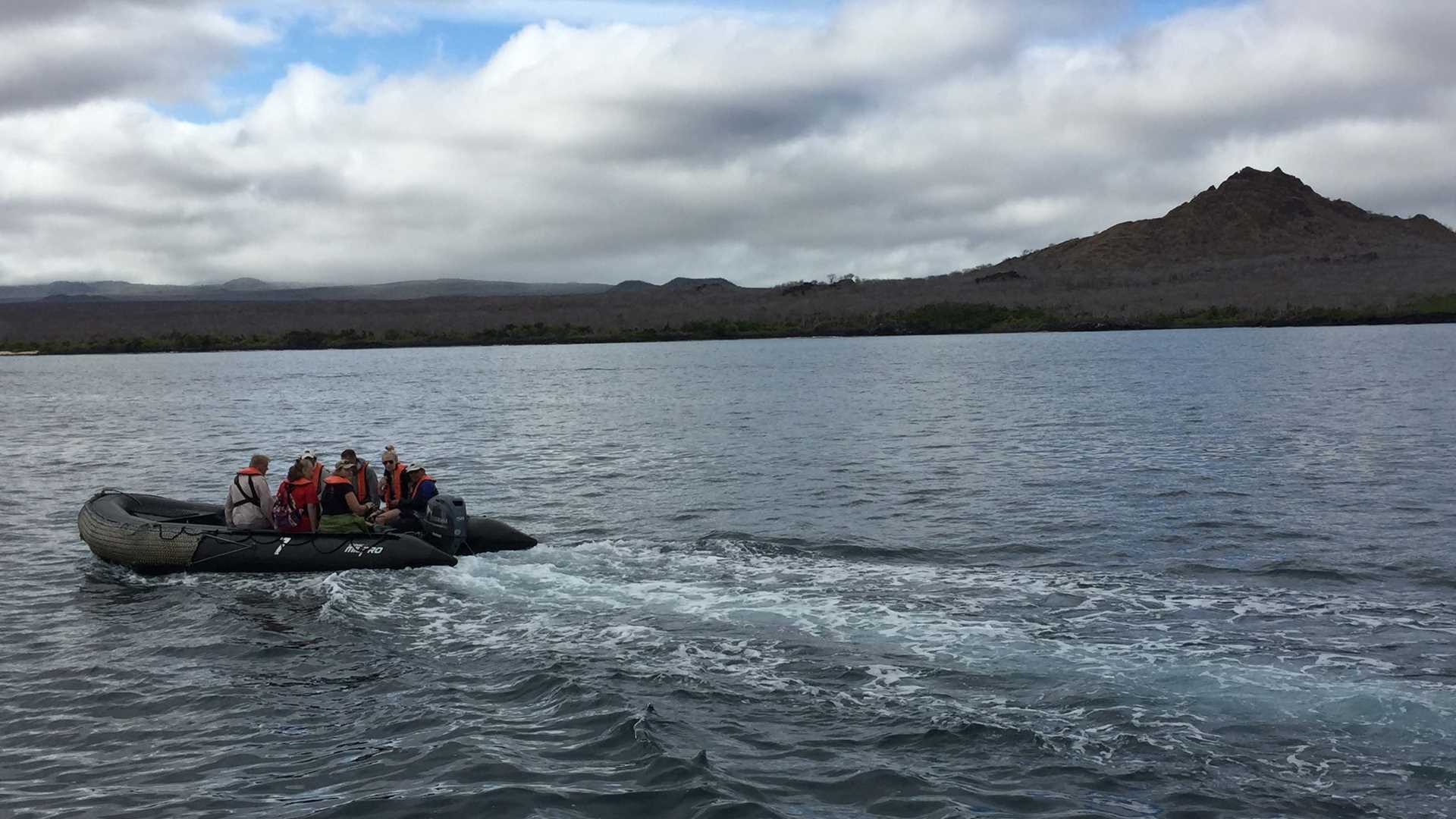Santa Cruz Island, is in the central part of the archipelago; it offers a large number of unique destinations, and Dragon Hill is in the northwestern part of the island. It is one of the most unique sites, a large cinder cone, where a population of Galapagos land iguanas live around opuntia cactus, and other surprises for our explorers.
After breakfast the group disembarked in this unique destination. It is considered a unique walk and the highlight is the population of Galapagos land iguanas. These unique creatures are endemic to the Galapagos Islands and live around this small hill, they need the large opuntia cactus to survive, it is their most important food source.
This location has recovered from the presence of introduced species, such as goats, dogs, pigs and rats. The Galapagos National Park rangers established an eradication program more than 20 years ago to free this area from aggressive introduced mammals.
Our group disembarked on a lava field, connected with an impressive sandy beach and a forest of incense trees and giant prickly pear cacti. It is not difficult to observe other unique creatures endemic to the Galapagos Islands, like different species of ground finches, white-cheeked pintail ducks, Galapagos mockingbirds and other shore and land birds.
A small group decided to take the short walk and the Zodiac ride, with me, and we navigated around a beautiful area where mangroves were together with opuntia cactus and incense trees, we saw many Pacific green sea turtles, a few white-tip reef sharks, and many tropical reef fish, before disembarking.
After the walk, we returned to National Geographic Endeavour II. Then, some of us went to the beach and others decided to practice deep water snorkeling around Guy Fawkes Islets, our team of naturalist guides are underwater experts, and they found a giant manta ray.
Back onboard we enjoyed a classic Ecuadorian lunch, the best food ever.
In the afternoon we navigated National Geographic Endeavour II to search for marine life; manta rays were jumping around, and we saw frigate birds flying around together with storm petrels and Galapagos shearwaters.
We enjoyed sunset while navigating around the famous Daphne Major Islet, a real natural laboratory of evolution. Dr. Peter and Rose Mary Grand (Princeton University) choose this islet to study the evolution of Darwin’s finches for more than 30 years, and they keep coming to this unique location every year.
Everybody was happy, talking about this unique experience, and getting ready for our next day in the Galapagos Islands.







